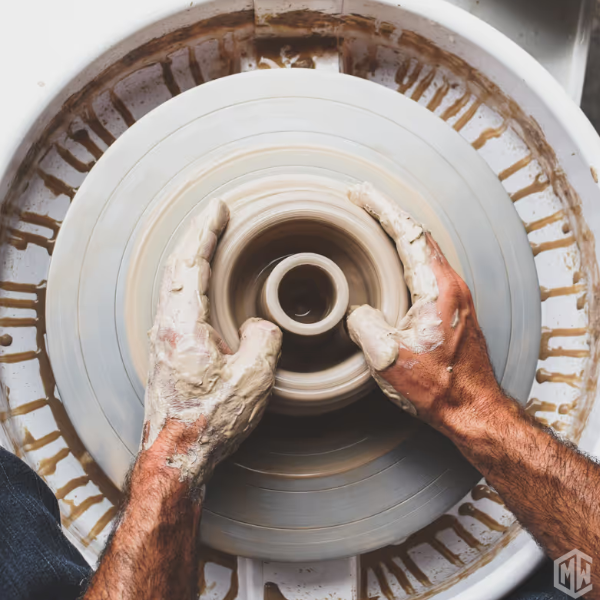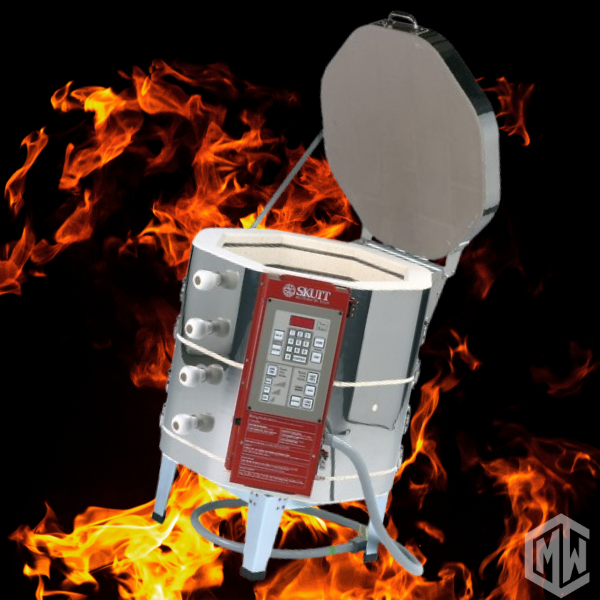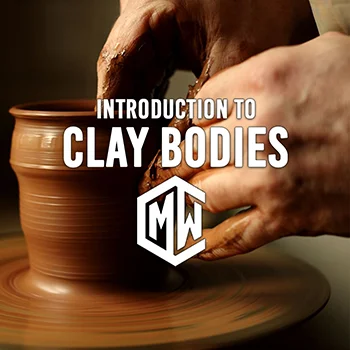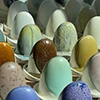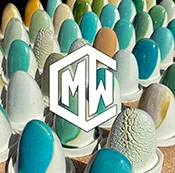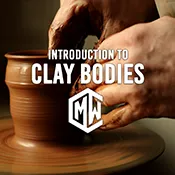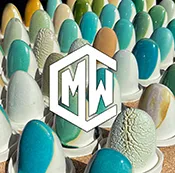So, you’ve taken your first pottery class, and now you’re officially hooked? Welcome to the club! The feeling of clay transforming between your fingers is truly addictive. But what happens when that class ends and you’re left with a burning desire to keep creating? Time to take your pottery passion to the next level and set up your own little clay haven! But where do you even begin?
Don’t worry, we’ve got the inside scoop on where to find all the goodies you need to keep those creative juices flowing.

🚗Skkkrtt.. Do you want to know EVERYTHING a beginner should know!? CMW’s new blog feature now lets you view an ENTIRE beginners series specially curated by us! Read CMW’s Beginner Series now!
Clay: The Heart of the Matter
First things first, you’ll need some clay! Luckily, there’s a whole world of clay out there, just waiting to be molded into your next masterpiece. Here’s where to find it:
- MOST RECOMMENDED – Local Pottery Suppliers: Start with a Google search for “pottery supply stores” in your area. These shops often have a wide variety of clay bodies to choose from, and the staff can offer expert advice.
- Online Retailers: If you prefer the convenience of online shopping or need to budget, there are numerous online retailers that specialize in ceramic supplies. Big Ceramic Store, Sheffield Pottery, and Clay Planet are just a few popular options. Not our first pick because the material isn’t always consistent so if you have the luxury- be picky!
- Clay Clubs and Studios: Many pottery clubs and studios sell clay to their members or the public. This can be a great way to support your local ceramics community.
Read more articles from CMW about clay HERE!
Wheel-y Good Options: Finding Your Perfect Pottery Wheel
Now for the centerpiece of your home studio: the pottery wheel! There’s a wheel out there for every budget and skill level, from compact tabletop models to professional-grade behemoths. Here’s where to find your spin doctor:
- Local Pottery Suppliers: Again, your local pottery supply store is a great place to start. They often have wheels on display, allowing you to try them out before you buy.
- Online Marketplaces: Amazon, eBay, and Etsy can be treasure troves for finding both new and used pottery wheels. Just be sure to do your research and read reviews before making a purchase.
- FIRST CHOICE – Specialty Retailers: Companies like Shimpo, Brent, and Skutt are well-known for their high-quality pottery wheels. Their websites and authorized dealers are good resources for finding their products.
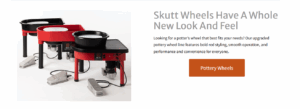
Kiln-derful Choices: Firing Up Your Creativity
No pottery setup is complete without a kiln! This is where the most happens, transforming your clay creations into durable, lasting works of art. But with so many kilns on the market, how do you choose the right one?
- Electric vs. Gas: Electric kilns are generally easier to use and maintain, making them a good choice for beginners. Gas kilns offer more atmospheric control but require more expertise.
- Size Matters: Consider the size of your workspace and the types of pottery you plan to create.
- New vs. Used: New kilns come with warranties and peace of mind, but used kilns can be a budget-friendly option. Just be sure to inspect them carefully for any signs of wear and tear.
Read CMW’s article: Diving Deep into Electric Kilns with Freddy Fredrickson to learn more about electric kilns!
Where to Find Your Kiln:
- Local Pottery Suppliers: Your local pottery supplier is a great resource for kilns, offering expert advice and potential servicing options.
- Kiln Manufacturers: Companies like Skutt, L&L Kilns, and Paragon offer a wide range of kilns for all needs.
- Online Marketplaces: You can often find good deals on used kilns on online marketplaces like Craigslist and Facebook Marketplace.
“But what about maintenance? Is my own kiln worth the cost?” Read CMW’s article Ceramic Kiln maintenance and Testing: Why Is It Important?
Bonus Round: Essential Extras
Of course, clay, a wheel, and a kiln are just the beginning! You’ll also need a few essential tools and supplies to complete your pottery setup:
- Tools: Basic tools like a sponge, wire cutter, needle tool, and ribs are essential for shaping and trimming your pottery.
- Glazes: A rainbow of glazes awaits! Experiment with different colors and finishes to add personality to your pieces.
Taking the Plunge: Tips for Setting Up Your Home Studio
- **Space: ** Dedicate a space in your home with good ventilation and enough room to move around comfortably.
- Budget: Pottery can be an expensive hobby! Set a budget and prioritize your purchases.
- Community: Connect with other potters online or in person for support, inspiration, and advice. Join CMW’s patreon to be connected to the best ceramic minds!
Remember: Building your home pottery studio is a journey. Start with the essentials, and gradually add to your collection as your skills and budget allow. Most importantly, have fun and let your creativity soar!

🚗Skkkrtt.. Do you want to know EVERYTHING a beginner should know!? CMW’s new blog feature now lets you view an ENTIRE beginners series specially curated by us! Read CMW’s Beginner Series now!
Ready for more? Is it easier to follow along in video format then blog?
Ceramic Materials Workshop has several FREE videos to help you learn more about glaze chemistry. In this series of short videos, you can learn more about glaze application, what crazing is and how to avoid it, the Unity Molecular Formula (UMF), How to Read Stull’s Map and about cone temperatures! We add new content often so make sure that you subscribe to be notified when we post a new video to this playlist! We hope that you enjoy them!
Start watching the Free Online Glaze Chemistry Lessons NOW!
Ready to dive deeper?
Loved learning about ceramic glazes? Want to go even deeper? Check out our Workshops & Courses, now available in Spanish, or YouTube Channel where Matt breaks it all down, myth-busting and Stull chart included!


